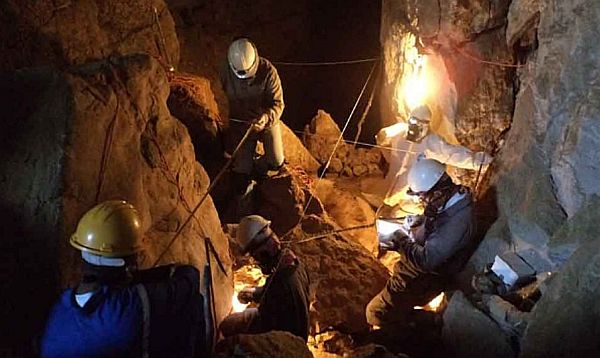Mexico City, Mexico - Nearly 30 human skeletons, dated back to the second millennia before our era, were found in the La Sepultura cave, in the state of Tamaulipas, which could be related with the first settlers of the American continent, according to the genetic study headed by experts of the National Institute of Anthropology and History (INAH.)
Based on the osteometric (bone) studies, ancient DNA and radiocarbon tests, applied to the osseous (teeth) remains recovered at the municipality of Tula in the Eastern Sierra Madre, archaeologists can "demonstrate that, in this area, they have found evidence of one of the most ancient genetic lineages in America." These remains are therefore associated with the men that crossed the Bering Strait 12 or 10 million years before.
The radiocarbon dating of the osseous remains and a fragment of a grass mat found in the same cave, place them among the years 1397 through 1195 BC and 1313 and 914 BC.
Jesus Ernesto Velasco added that earlier DNA studies - made in the Paleo-DNA Laboratory of Lakehead University, in Ontario, Canada - made on a mummified specimen from the Escondida or Encantada cave, rescued in 2008 by the archaeologist Gustavo Ramirez, has allowed the identification of the genetic profile of these settlements.
The physical anthropologist said that the analysis will bring certainty to the origin of the prehistoric groups in the Mexican Northwest and its dispersion throughout time.
Archaeology in Caves
In order to explore the vast region of the Eastern Sierra Madre and Tamaulipas, where there is a great quantity of prehistoric caves and cave paintings, an interdisciplinary team was formed with the participation of specialists of the IIA from UNAM, the University of Cordoba, Spain, and the INAH Center in Tamaulipas.
By October 2011 they had rescued the osseous remains of between 26 and 30 individuals. This same year they initiated the examination of other cavities located in the Tula municipality, among these the "Cave of the Dead" in the Naola Sierra, where they found more osseous remains along with ceramic and stone artifacts.
The bones in the Cave of the Dead were dated between 850 and 794 BC, "but the ceramic objects had a later dating: 200 through 600 AD, which is why we believe the cave was later used by other settlers," detailed archaeologist Vanueth Perez.
Finally, to this date, they have located other cavities in the mountains of Tamaulipas with great potential, such as the Tepozan caves with the presence of cave paintings; in del Guano and el Fraile they have also found cave paintings in rocky terrains and funerary remains, among others.


